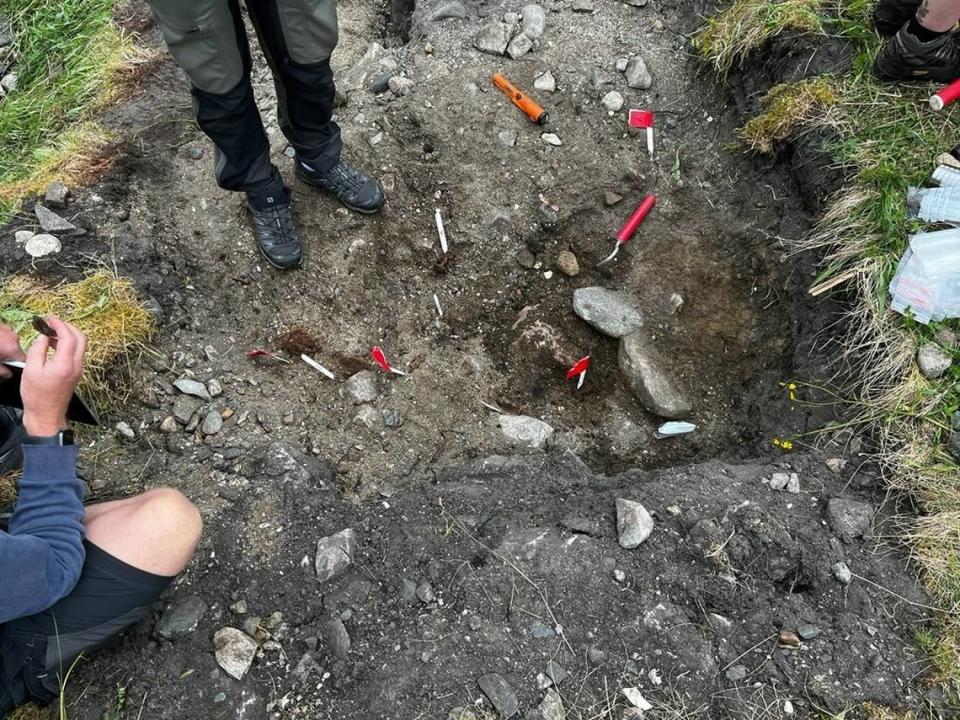Secret structure was likely hidden in Viking-age king’s massive burial mound in Norway
A light breeze fluttered the grassy hill, sending a ripple across the rounded mound. Situated on an island off the coast of Norway, the grassy hill looks like a natural extension of the landscape.
But the hill isn’t natural at all. Rather, it contains a centuries-old secret structure — and archaeologists think they know what was buried inside.
The grassy hill-like slope on Leka island is a massive burial mound known as Herlaugshaugen, the Norwegian University of Science and Technology said in a June 30 news release via Norwegian SciTech News.
Herlaugshaugen is the “the final resting place” of a Viking king, officials said. The burial mound is one of the largest in Norway, stretching almost 200 feet in diameter.
Archaeologists excavated Herlaugshaugen multiple times in the 18th century and uncovered a wall-like structure, nails and “a seated skeleton with a sword,” officials said.
“Unfortunately, these finds disappeared in the early 1920s,” archaeologist Geir Grønnesby said in the release. Even the skeleton vanished.
To better understand the burial mound’s secrets, archaeologists conducted a small excavation, Trøndelag County Municipality said in a news release. They found much more than they expected.

Archaeologists uncovered several large metal nails, or rivets, and identified the artifacts as remnants of a ship, university officials said.
“We should have had a camera ready when the first nail was found: We were through the roof with excitement,” Grønnesby said.
The rivets indicate that Herlaugshaugen likely contained a ship burial, the release said. A ship burial is a type of grave where the deceased was buried inside a boat which was covered by dirt to form a mound.

“It is not possible to determine the exact size, but the size of the nails tells us that there was a ship,” Grønnesby said.
Archaeologists don’t know how much of the ship is left. The structure may have rotted away over the centuries, university officials said.
Excavations also uncovered fragments of wood, charcoal and a horse tooth, archaeologists said.
These artifacts will be further analyzed over the coming months, Trøndelag County Municipality said.

Herlaugshaugen has generally been considered a Viking-age burial mound, Grønnesby said, but the grave has some similarities with an older pre-Viking-age burial. By analyzing the recent finds, archaeologists hope to determine the age of the site.
Leka is an island along the northern coast of Norway in Trøndelag county and about 500 miles north of Oslo.
Google Translate was used to translate the news release from Trøndelag County Municipality.
‘Fragile’ ship that sank in storm 2,500 years ago needs to be rescued — piece by piece
Someone buried treasure and vanished. Archaeologists just found it 3,000 years later
Broken pottery turns out to be wine jars forgotten by Romans over 2,000 years ago

